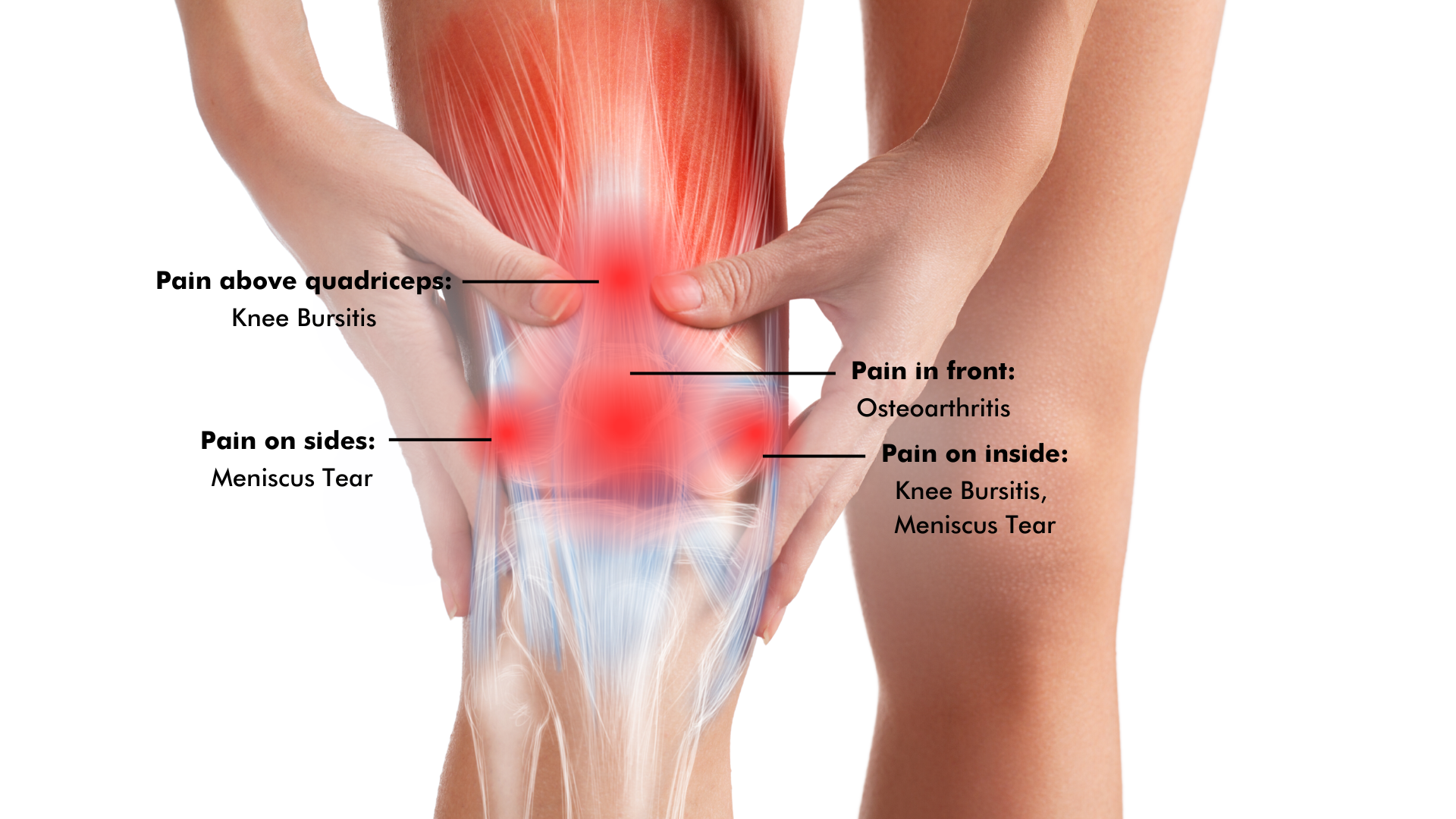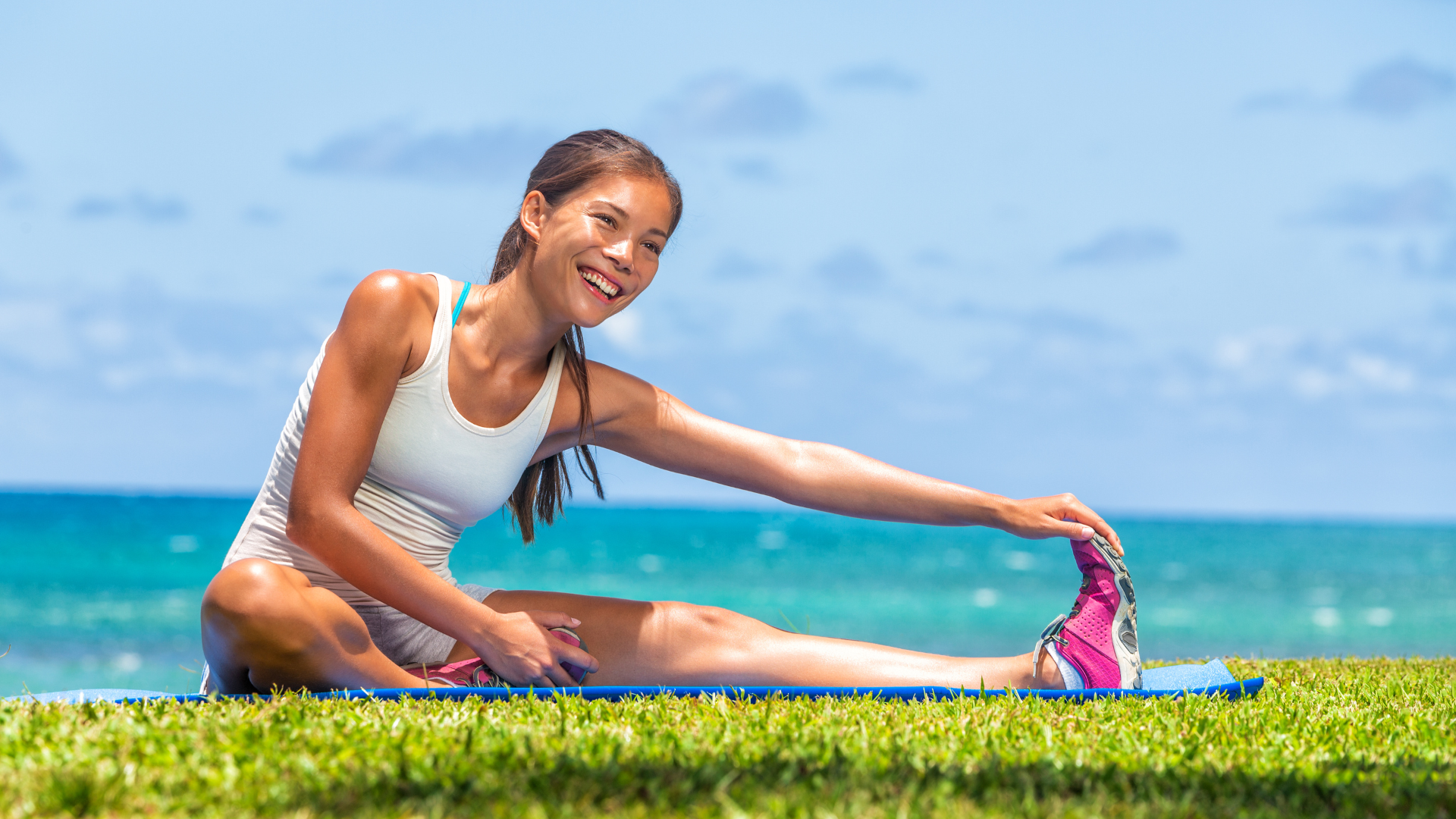Knee pain is a common medical symptom that affects many people, especially as they age. The knee joint is responsible for supporting the weight of the body and enables mobility, making it one of the most critical joints in the human body.
There are various causes of knee pain, ranging from injury and overuse to medical conditions such as osteoarthritis and rheumatoid arthritis. In some cases, knee pain may be a symptom of an underlying medical condition such as gout or infection. Understanding the underlying causes of knee pain is essential for effective treatment and management of the condition.
Why Knee Pain Occurs with Aging
There are several reasons why knee pain occurs more frequently in older individuals, including:
Degeneration, Wear, and Tear
As people age, the cartilage in their joints can gradually wear down. Osteoarthritis is one of the most common causes of knee pain in older people. It is a form of arthritis that occurs when the cartilage in the knee joint breaks down, causing the bones to rub together. This can lead to knee pain, stiffness, and sometimes swelling of the knee.
Obesity
Obesity is a significant risk factor for knee pain. That’s because excess weight places additional stress on the knee joint, which can lead to the development of osteoarthritis. Fortunately, losing weight through diet and exercise can help reduce the risk of knee pain. Besides, it’s beneficial for your overall health!
Medical Conditions
Older individuals may be more likely to develop medical conditions that contribute to knee pain, such as gout, rheumatoid arthritis, and bursitis. These conditions can cause inflammation and damage to the knee joint, leading to pain and reduced mobility.
Common Knee Problems that Come with Age
There are several common knee problems that come with age. Understanding the symptoms, causes, and possible treatments for each condition can help individuals manage their knee pain effectively.
Osteoarthritis
Osteoarthritis is the most common knee condition in elderly individuals. It occurs when the cartilage and lubricating joint fluid that protects and cushions the bones gradually reduce, losing their shock-absorbing properties.
The following are the causes and symptoms for osteoarthritis:
Causes: Age and weight are two significant factors that contribute to the development of osteoarthritis in the knee joint. Previous knee injuries, genetics, and occupational activities can also come together to increase the risk of osteoarthritis.
Symptoms: Joint pain, stiffness, and difficulty moving the knee are the primary symptoms of osteoarthritis. In severe cases, individuals may experience swelling and redness in the knee joint.
Knee Bursitis
Knee bursitis is an inflammation of the small fluid sacs called bursae that are located near the knee joint. These sacs help to cushion and lubricate the joint, reducing friction between the bones and the soft tissues surrounding the knee. Knee bursitis can occur in individuals of all ages, but it is more common in older adults.
Causes: Knee bursitis is typically caused by repeated pressure on an area or by using a joint too much. Some common causes of knee bursitis include kneeling for extended periods of time, direct blows or trauma to the knee, and medical conditions like rheumatoid arthritis, osteoarthritis, or gout. Obesity can also increase the risk of developing knee bursitis.
Symptoms: The most common symptom of knee bursitis is pain and swelling around the knee joint. Inflammation, stiffness, and a limited range of motion are also common. In some cases, the affected area may feel warm to the touch. Fever may also occur in some cases.
Pseudogout
Pseudogout is a type of arthritis that can affect people of any age, but it is more commonly seen in the elderly. It is caused by the build-up of calcium pyrophosphate dihydrate crystals in the joints, which leads to inflammation and pain.
Causes: In addition to knee pain, pseudogout can also cause pain and stiffness in other joints, such as the wrists, ankles, elbows, and shoulders. The symptoms of pseudogout can be similar to those of gout, another type of arthritis that is also caused by crystal build-up in the joints.
Meniscus Tear
A meniscus tear is a common injury that can occur in the knee joint. The meniscus, a C-shaped cartilage, acts as a shock absorber between the femur (thigh bone) and tibia (shin bone) in the knee joint.
Causes: Causes of a meniscus tear may include degeneration in the elderly, where the meniscus becomes more fragile and easily damaged. It can also occur in people with arthritis in their knees. In younger people, meniscus tears can result from traumatic injuries, such as a sudden twist or forceful impact.
Symptoms: Some of the symptoms of a meniscus tear may include pain, swelling, stiffness, and difficulty moving the knee. It can present as locking of the knee when standing after being seated for some time. Other symptoms include finding it difficult to stand or walk.
Ways to prevent and manage knee pain
Preventing knee pain is not always possible, but there are things that you can do to help reduce your risk of developing knee pain or to manage it if you already have it.
Maintain a healthy weight
Carrying excess weight puts additional stress on your knees and can increase your risk of developing knee pain. Maintaining a healthy weight through a balanced diet and regular exercise can help to reduce this risk.
Exercise regularly
Regular exercise can help to strengthen the muscles around your knee, improve flexibility, and reduce your risk of developing knee pain. Activities such as walking, swimming, and cycling are low-impact and can be beneficial for your knees. However, it is important to that you’re using proper techniques during physical activities to avoid excessive strain on the knees, and avoid repetitive movements that can cause discomfort. To know more on the type of exercises that helps with knee pain, read Knee Pain when Bending: Exercises and Lifestyle Tips
Wear appropriate footwear
Wearing appropriate footwear can help to reduce the impact on your knees and protect them from injury. Shoes with good cushioning and support can help to absorb shock and reduce the stress on your knees. Additionally, protecting your joints from harm by wearing appropriate gear and using assistive devices when needed can help maintain healthy joints.
Be mindful of your posture
Poor posture can put additional stress on your knees, so it’s important to be mindful of your posture when standing or sitting. Keeping your back straight and your shoulders relaxed can help to reduce the strain on your knees.
Minimally Invasive Treatments
There are several minimally invasive treatments available to alleviate knee pain. Coreflex injection, platelet-rich plasma therapy (PRP therapy) and Intra-articular injections are effective options for individuals who want to avoid surgery or lengthy recovery times. PRP therapy promotes healing and reduces inflammation, while Intra-articular acts as a lubricant to reduce friction. Coreflex injections can also be used to reduce inflammation in the knee joint and alleviate pain. It’s important to consult with your doctor to determine the best treatment plan for your individual needs.
When to see a Pain Doctor
If you are experiencing intense knee pain, are unable to bear weight on your knee, or notice any deformity in your knee, it’s crucial to seek the assistance of a Pain Doctor without delay.
Our Pain Doctors have extensive knowledge and training in diagnosing and treating various types of knee pain. They are able to thoroughly evaluate the underlying cause of your knee pain and recommend the appropriate treatment.
If you observe any signs of infection such as redness, warmth, or fever, it’s essential to seek immediate medical attention. Early intervention and treatment can prevent further damage to the knee joint and improve your overall quality of life. Ignoring pain symptoms or attempting to self-diagnose and treat them can lead to unnecessary suffering, worsen your condition, and potentially delay effective treatment.
Conclusion
It’s perfectly normal to be worried about knee pain, especially when we enter our golden years. The medical symptom commonly affects many people, especially with age. While osteoarthritis is the most common cause of knee pain in older persons, many other conditions can cause knee pain too.
It’s important to be aware of the risk factors for knee pain and to take steps to prevent it, such as maintaining a healthy weight, exercising regularly, and wearing appropriate footwear. If you do experience knee pain, it’s important to seek medical attention to ensure that you receive the appropriate diagnosis and treatment. With proper care and management, knee pain can be effectively treated, and you can maintain an active and healthy lifestyle for many years to come!
FAQ
Why Do the Elderly Get Knee Pain More Often?
As we age, our bodies undergo various changes that make us more susceptible to knee pain. The articular cartilage of the knee joint – which serves as a cushion between the bones – for example, wears away over time. This removes the cushion that protects the bones and prevents them from rubbing against each other, leading to pain, stiffness, inflammation, and in time, osteoarthritis.
Apart from osteoarthritis, older adults are also more prone to knee injuries and medical conditions that can cause knee pain. Older adults, for example, are more likely to suffer from gout, rheumatoid arthritis, and other joint diseases that can cause inflammation and pain in the knees. Additionally, as we age, our muscles and tendons weaken, making us more prone to falls and injuries that can damage the knee joint.
Seniors who are sedentary are also more likely to be overweight or obese, which can increase the pressure on the knee joint and cause pain. Lastly, as we age, our bodies become less efficient at repairing and regenerating tissues, including cartilage and bone, which can lead to the degeneration of the knee joint and chronic knee pain.
Overall, the higher incidence of knee pain in older adults can be attributed to a combination of factors such as osteoarthritis, medical conditions, weakened muscles and tendons, obesity, and age-related changes in the body’s ability to repair and regenerate tissues.
What is the likelihood of elderly individuals developing osteoarthritis?
Osteoarthritis is a common condition among the elderly population, especially those aged 60 and above. It is a degenerative joint disease that results in the breakdown of cartilage in the joints, causing pain, stiffness, and loss of mobility. The risk of developing osteoarthritis increases with age, with the majority of cases occurring in people over the age of 65.





